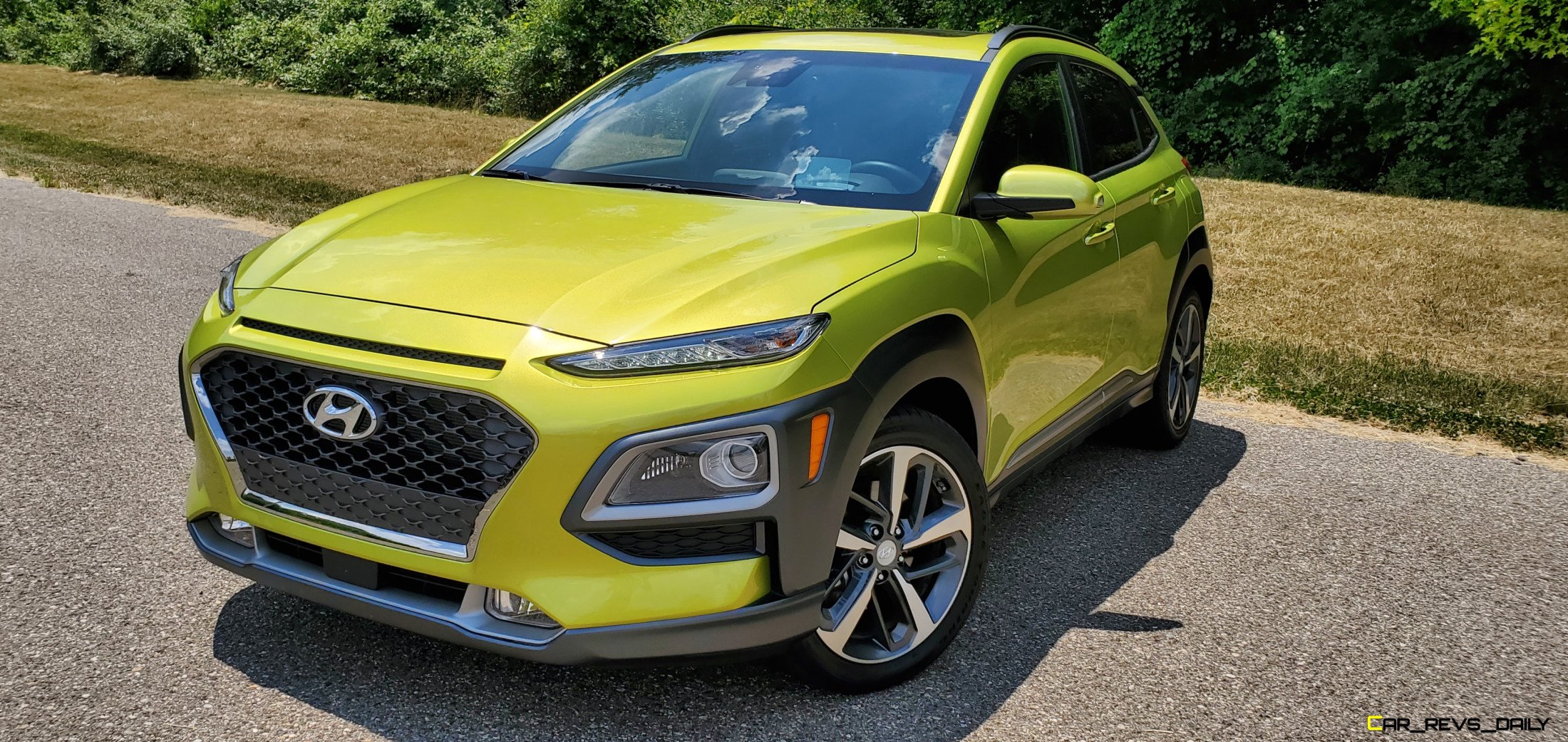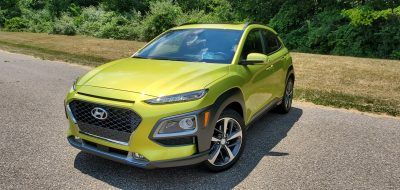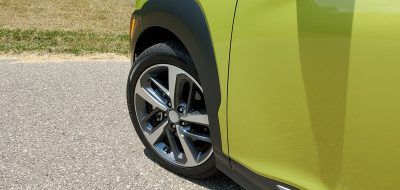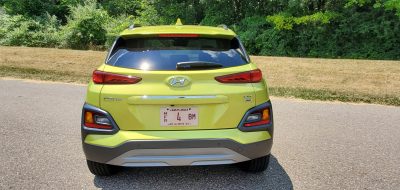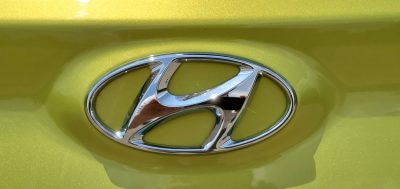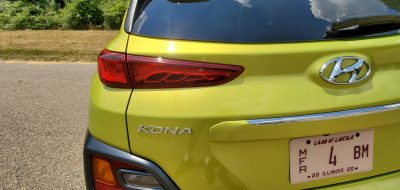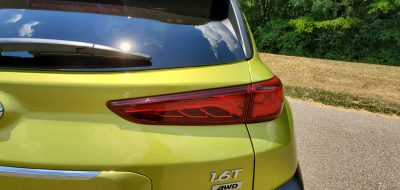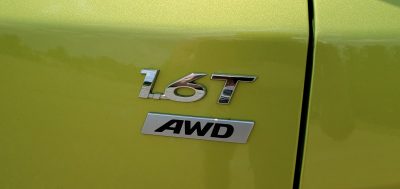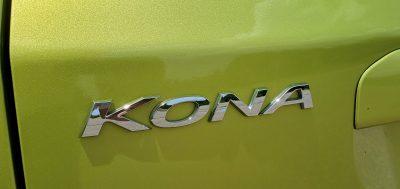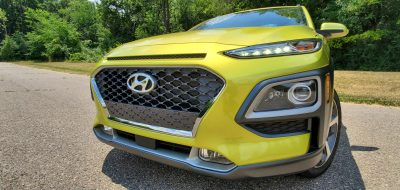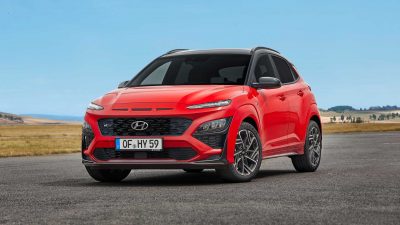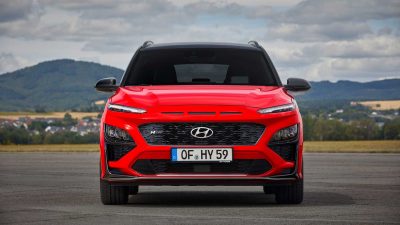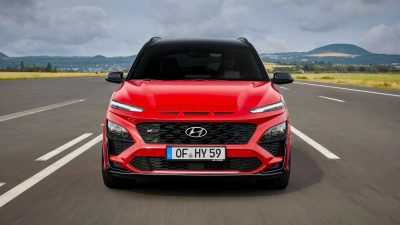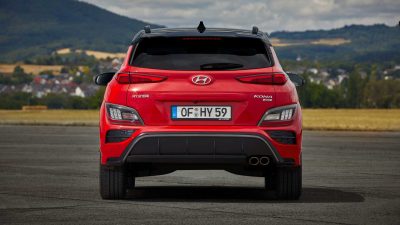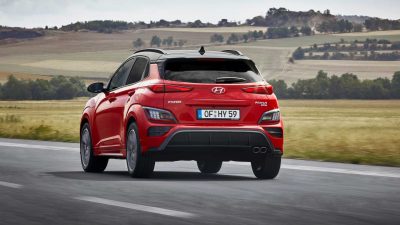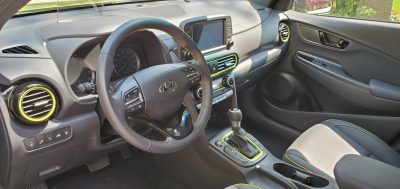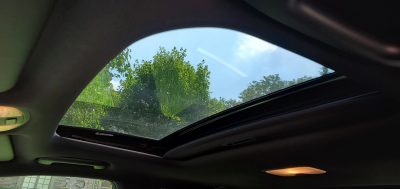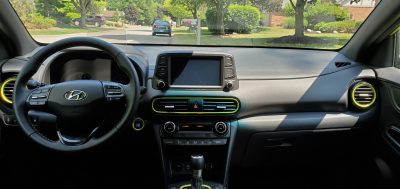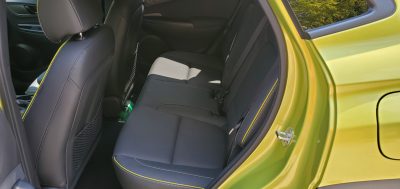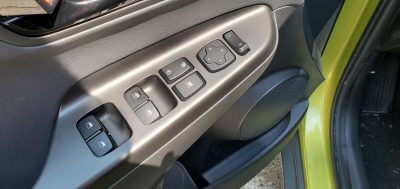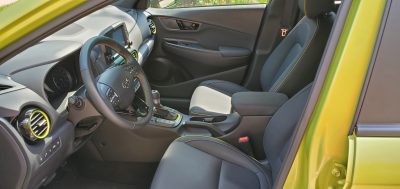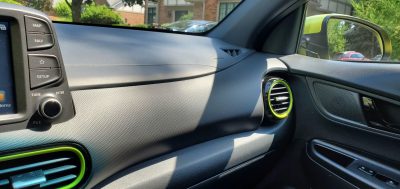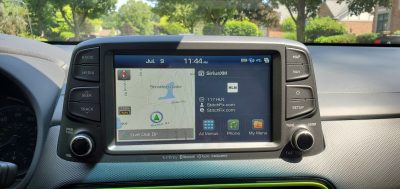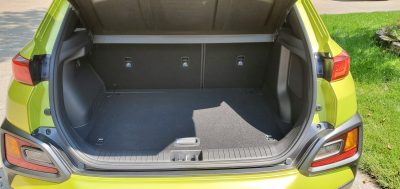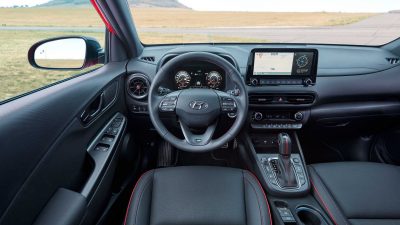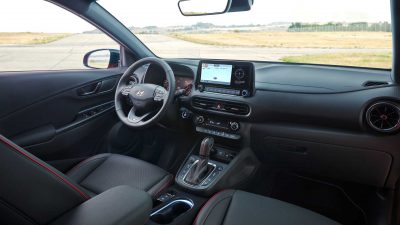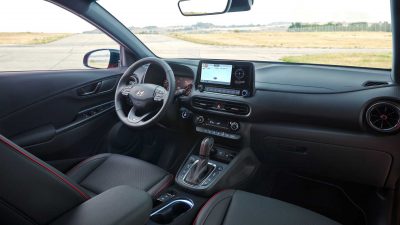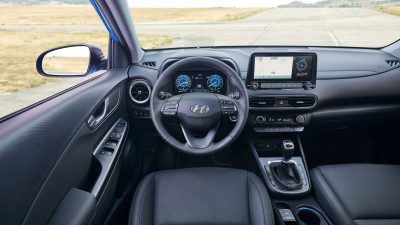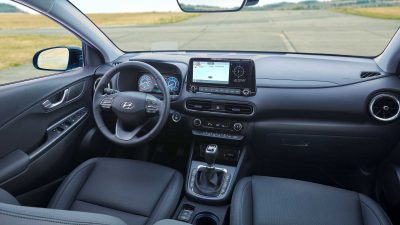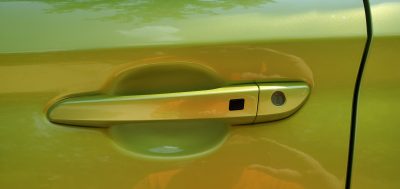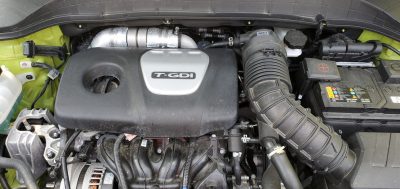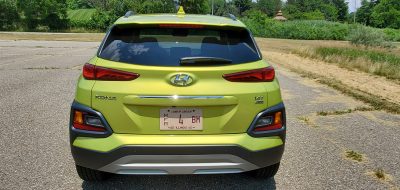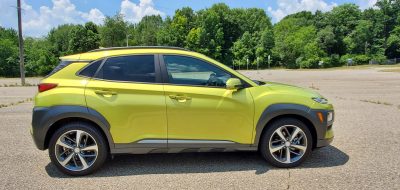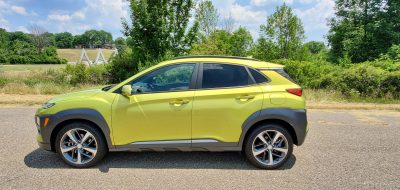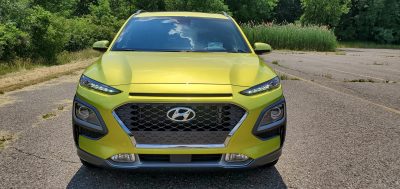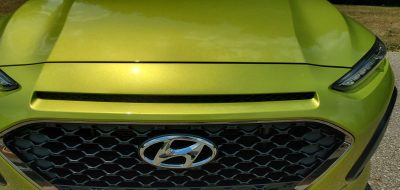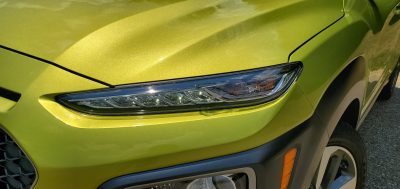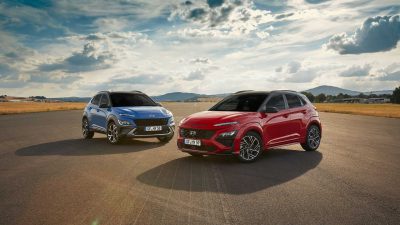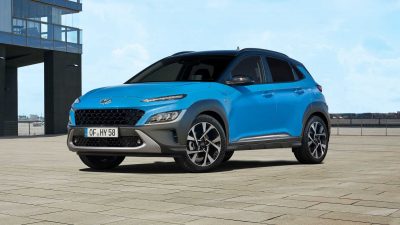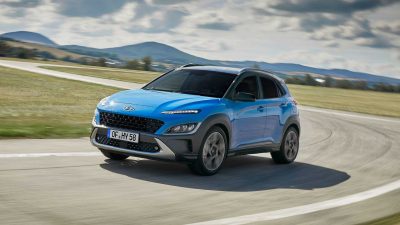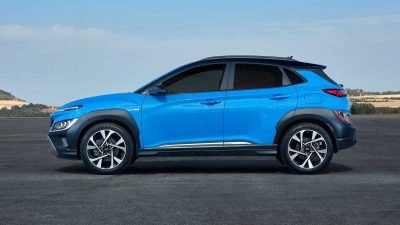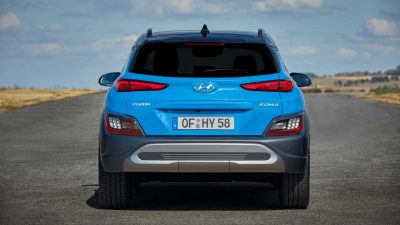With Hyundai recently unveiling the heavily updated 2021 Kona for Europe (2022 for our market) its clear that Hyundai is still willing to walk the walk when it comes to making a compact CUV that has a combination of style, technology, and performance. But with the game tightening up in its segment, the Kona still needs to be on its A game to fend off new challengers. Hyundai has done just that with the 2022 Kona. But while Hyundai unveiled it for the European market, it still serves as a glimpse to whats in store for U.S. customers. We recently had a chance to get a brief refresher with a 2020 model, and we set out to see what key changes are in store for Hyundai’s urban warrior.
A nip and tuck make a world of difference:
The exterior styling of the Hyundai Kona has always been a very unique canvas thanks in part to its bold and futuristic front fascia. Hyundai calls the look “Urban Armor” and it certainly makes Konas like our Ultimate grade tester stand out in urban traffic. 2022 aims to polish the look slightly, and the new model manages to do this with all new daytime running lights, a new front grille, and even a revised front skid plate. These subtle changes help the Kona add a dash of spunk to its personality, and the changes are pretty striking when old and new are viewed face to face. The side profile still has playful design lines, and it leads out to the rear of the Kona. Here, the changes are a bit tougher to spot, but we promise, Hyundai designers did make some changes back there for 2022. The taillight lenses are tweaked, and a new rear diffuser helps add a pinch of sport to the handsome design.
Buyers looking for more sport will adore the all new N-Line model. While it’s not the pure blooded N model that has been spotted testing at various race tracks around the world, its presence should please customers that want a performance focused offering, but need something that is more practical in everyday driving. N Line models benefit from their own host of styling updates including three small nostrils on the leading edge of the hood. But we will admit, the 2022 model will have a tough act to follow, current generation Konas like our tester really shine when paired with certain colors and the otherworldly yellow hue that adorned our example did a really good job meshing with some of the chrome brightwork. This allows the Kona to have very distinct DNA, and makes it a compelling alternative to more function focused entries.
Technology remains center stage, but updates galore:
The interior of the current generation Kona made waves when it first appeared, but we will admit, the cheap plastics and questionable interior finishes still clash with the technology first layout (despite the best efforts of the bright yellow accents in our tester.) The 2022 Kona brings some order to the land, and adds higher quality plastics, as well as decidedly more upscale looking finishers in select areas of the interior. However, technology is still the star of the show in the Hyundai Kona, and engineers wanted to make sure that the tiny CUV still had the tools to go toe to toe with the best of them. Our tester featured a 7.0 inch display with Hyundai’s UVO infotainment software baked in. However, 2022 sees the 7.0 inch screen being pitched for a bigger 8.0 inch screen.
The highlight though is the optional 10.23 inch screen. We suspect that Ultimate grade Konas will most likely have this particular unit standard, with Limited and other select models having it as an optional add on. It certainly has some of its rivals beat in terms of sheer size, but we are curious to see how it works out in the real world. Our Ultimate spec tester was a very comfortable place to spend time in, with good amounts of comfort and support, in the front seats. The second row is still a cramped place for adults to spend time in, but 2022 models try to improve things slightly by adding newly optional heated rear seats. As a bonus, the analog gauges can be replaced with a fully digital setup which looks fresh and sleek at the same time. The analog units in our tester are very informative, but we like embracing new ideas, and look forward to seeing what the digital instrument cluster looks like in person.
Performance appears to be unchanged, but is that really a bad thing?
With all the changes that are in store for the exterior and interior, its refreshing to see that no major changes are in store for the performance hardware. That means the familiar 2.0 liter four cylinder that powers base models, and the zestier 1.6 liter turbocharged four cylinder that’s good for a healthy 175 horsepower. Our 2020 tester was equipped with the 1.6 liter, and it proved to be a welcome shot in the arm when it came to low end performance, especially when accelerating from stoplights. A seven speed dual clutch automatic is the sole transmission, and it did a good job delivering smooth shifts
But we know that some of these Konas will make there way to newly minted college students, especially those that have to travel cross country to reach their campus home. An invitation to a separate press function in Illinois gave us the perfect opportunity to find out how well the Kona could handle this extreme responsibility. The 372 mile trip to the Autobahn Country Club would allow us to get better acquainted with the Kona’s highway manners, and with the sun yet to rise in Metro Detroit, we made our departure at 2am to help ensure a timely arrival. The early start allowed us to see the effectiveness of our tester’s LED headlights, and they are very bright for the segment, with our testers slick eyes helping shine a bright path for us as we made our way towards the western part of Michigan.
Eventually the sun added some much needed light to our drive, as we made our trek to Illinois, and it illuminated us on just how fuel efficient the 1.6 liter turbocharged four cylinder is, with our tester only requiring one drink of fuel on the return trek to Michigan. The Kona’s freeway manners are pretty sharp for a vehicle in its segment, with the CUV having enough power and poise to make mince meat out of passing maneuvers. As for the 2022 Kona, there is a slight chance that a hybrid version could eventually make its way to our shores. The Kona Hybrid is currently an international market only exclusive, but as hybrid technology explodes in popularity with U.S. consumers, the Kona Hybrid could emerge as a very profitable business case for the company.
That’s also the case with the N Line variant. The N Line promises to be a very sporty offering, and buyers that want more vigor to go along with their everyday practicality (or even those that once owned a hot hatch) will have a very compelling alternative to consider when shopping for their next CUV.
Value Quotient:
Pricing for the 2021 Kona starts at $20,400 for the base SE model. As you move through the trim ladder, the price naturally goes up, with SEL, SEL Plus, and Limited models going from $22,200 all the way to $26,200 for the Limited. Ultimate grade models like our tester top out the range, and wield prices that project that message accordingly. A base version of this trim starts at $28,050, with options helping this trim to end up being just under $30,000. Our 2020 grade example uses a slightly different pricing ladder, and starts at $27,950. Our lightly optioned tester still ended up being just under $30,000 which is in the same territory as the bigger Encore GX in Essence trim, as well as select versions of the Jeep Renegade, Nissan Kicks, and the Ford EcoSport. Buyers take note, Lime Twist was a 2020 only color, and is not available on 2021 model year Konas.
As for the 2022 Kona, we suspect that pricing will still retain a value centric feel, though the addition of the N Line trim and new options that were once non-existent on the Kona could help bump the prices of some trim levels up slightly when fully equipped.
Either way, the Hyundai Kona still has what it takes to be a formidable entry in the CUV ranks. and with the 2022 Kona promising to bring some new tricks and even some new moves to Hyundai showrooms, we look forward to seeing how its successor does when it eventually makes its way to U.S. Hyundai showrooms.

Carl Malek has been an automotive journalist for over 10 years. First starting out as a freelance photographer before making the transition to writing during college, his work has appeared on numerous automotive forums as well as websites such as Autoshopper.com.
Carl is also a big fan of British vehicles with the bulk of his devotion going to the Morgan Motor Company as well as offerings from Lotus, MG, and Caterham. When he is not writing about automobiles, Carl enjoys spending time with his family and friends in the Metro Detroit area, as well as spending time with his adorable pets.

